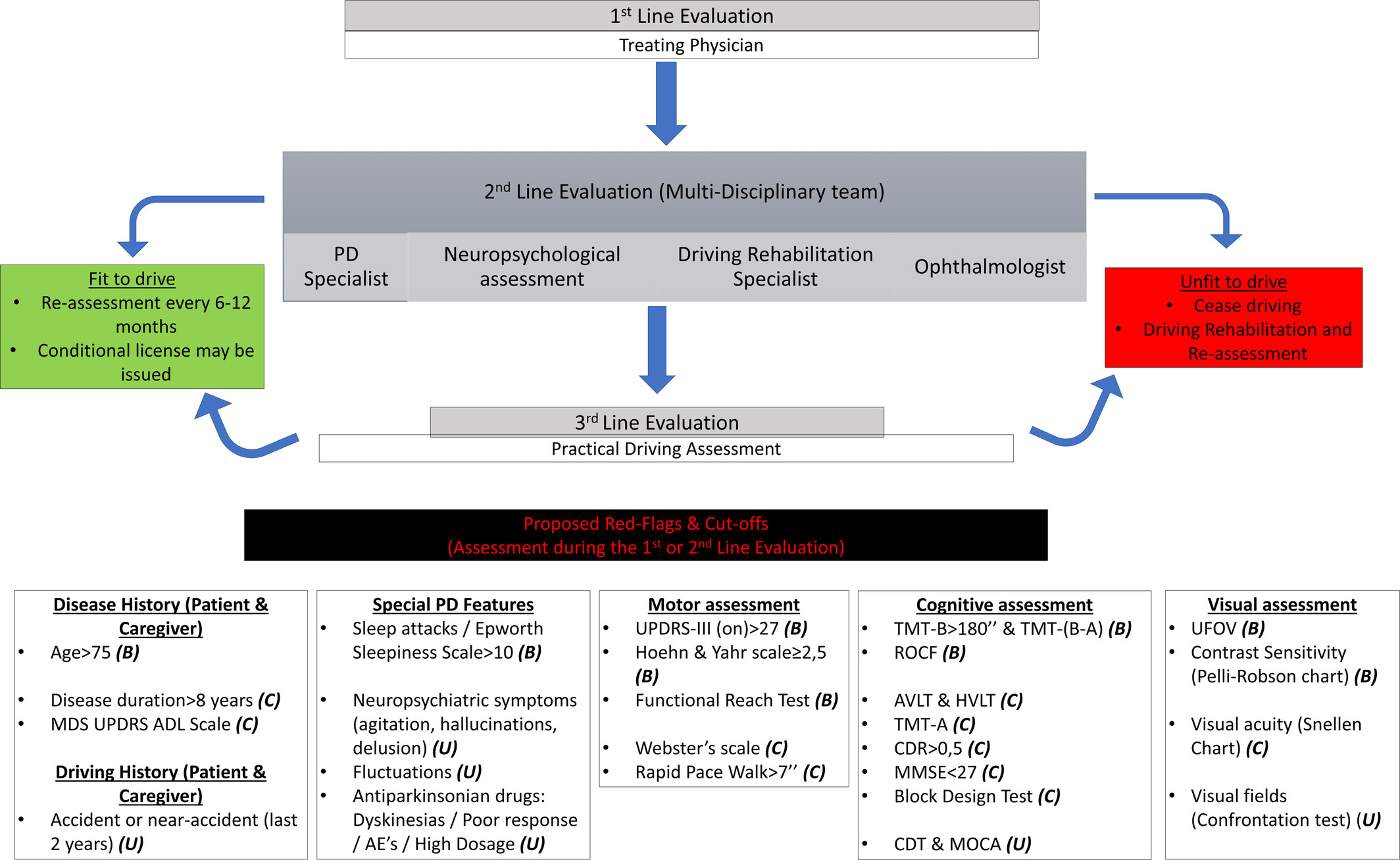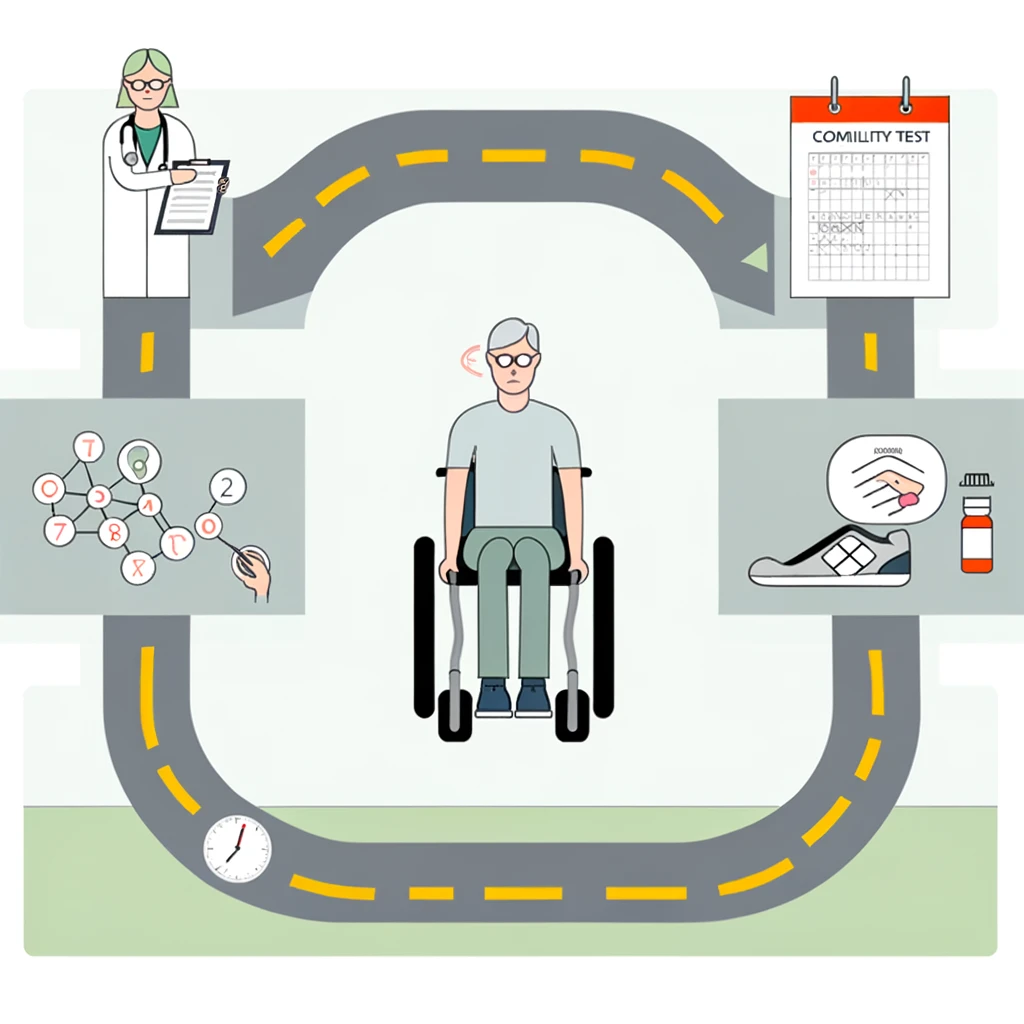2024 Breakthrough Therapy for Parkinson’s Disease: Introducing The Produodopa – A New Social Media Sensation and Hope
1. What’s the video about a Parkinson’s patient getting better with new medicine on social media? (Circulated in 2024)
A recent video showing the remarkable effects of a new Parkinson’s medication, Produodopa, has gone viral. Damien Gath, a 52-year-old man who has lived with Parkinson’s for 12 years, experienced a dramatic improvement in his symptoms just days after starting the treatment. Before the treatment, Mr. Gath struggled with severe, uncontrollable shaking that made daily tasks like making a cup of coffee nearly impossible. However, just two days after receiving Produodopa, his involuntary movements almost completely stopped, allowing him to perform everyday activities with ease. Mr. Gath described the effects as “extraordinary and life-changing,” marking a significant breakthrough in managing his condition and restoring a sense of normalcy to his life. This promising outcome has sparked hope for many living with Parkinson’s, showcasing Produodopa as a potential game-changer in the treatment of this challenging disease.
2. What is PRODUODOPA?

Produodopa is a new medication designed to help manage the symptoms of Parkinson’s disease. It is a combination of two drugs: foslevodopa and foscarbidopa. These drugs work together to increase the levels of dopamine in the brain, a chemical that helps control movement. In Parkinson’s disease, dopamine levels are low, leading to symptoms like tremors, stiffness, and difficulty with movement.
PRODUODOPA (foslevodopa/foscarbidopa) was developed by AbbVie as an innovative solution for advanced Parkinson’s disease, particularly for patients who suffer from severe motor fluctuations and for whom traditional treatments were no longer effective. AbbVie sought to address the need for a more consistent delivery method of levodopa, the gold standard in Parkinson’s treatment, which led to the creation of the first 24-hour continuous subcutaneous infusion therapy.
The medication received marketing authorization in the European Union through the Decentralized Procedure in the third quarter of 2022. Following this, the VYAFUSER™ pump, designed to administer the PRODUODOPA infusion, received the Conformité Européenne (CE) Mark in November 2023, allowing its use across Europe.
PRODUODOPA was launched in the European Union in January 2024, backed by extensive clinical research, including three significant studies that demonstrated its efficacy, safety, and tolerability. This medication marks a significant advancement in Parkinson’s treatment, offering new hope to those with advanced stages of the disease.
3. How does PRODUODOPA help with Parkinson’s disease?

Produodopa is administered through an infusion that delivers the medication continuously into the bloodstream, using a small pump. This steady delivery helps maintain consistent dopamine levels, reducing the fluctuations in symptoms that patients often experience with other treatments. The goal of Produodopa is to provide better control over Parkinson’s symptoms, helping patients lead a more normal, active life.
4. Are there other medicines like PRODUODOPA for Parkinson’s?
Yes, there are medications similar to Produodopa used to treat Parkinson’s disease. It belongs to similar group of medications which are being used for management of Parkinson’s disease These include:
- Levodopa and Carbidopa combination medications which are available in the market in the brand names of LCD, Syndopa, Sinemet, Tidomet
- Dopamine agonist molecules like – Pramipexole, Ropinirole – available with brand names of Pramirol/pramipex and Ropark
- Apomorphine injections and Pumps
- Levodopa inteinfusions pumps – known by brand name Duodopa
5. How is PRODUODOPA different from other Levodopa type medicines?
Produodopa differs from other Levodopa medicines in India primarily in how it is delivered and its formulation. While traditional Levodopa medications are typically taken as oral tablets or capsules, Produodopa is administered through a continuous infusion directly into the bloodstream using a small pump. This method ensures a steady and consistent release of medication, helping to maintain stable dopamine levels in the brain throughout the day.
This continuous delivery can reduce the “off” periods and fluctuations in symptoms that patients often experience with oral Levodopa, where the medication’s effect can wear off between doses. Additionally, Produodopa combines two drugs, foslevodopa and foscarbidopa, which work together more effectively to manage symptoms, potentially offering better control over Parkinson’s disease compared to standard oral Levodopa formulations available in India.
6. What is the Difference between PRODUODOPA pumps and APOMORPHINE Pumps?
PRODUODOPA pumps and apomorphine pumps are both used in the treatment of advanced Parkinson’s disease, but they differ significantly in terms of their active ingredients, mechanisms of action, and how they are used. (If all can remember there was significant social media wave about Nanavathi apomorphine therapy for Parkinson’s disease in 2019-20, when it was launched in India)
- Active Ingredients
- PRODUODOPA: The active ingredients in PRODUODOPA are foslevodopa and foscarbidopa, which are prodrugs of levodopa and carbidopa, respectively. Levodopa is a precursor to dopamine, the neurotransmitter that is deficient in Parkinson’s disease. Carbidopa prevents the breakdown of levodopa before it reaches the brain, increasing its availability.
- Apomorphine: Apomorphine is a dopamine agonist, meaning it directly stimulates dopamine receptors in the brain. Unlike levodopa, it does not require conversion into dopamine but directly mimics the effects of dopamine.
- Mechanism of Action
- PRODUODOPA: PRODUODOPA delivers a continuous subcutaneous infusion of levodopa and carbidopa, providing 24-hour coverage. This helps to maintain stable dopamine levels, reducing motor fluctuations (“on” and “off” periods) and dyskinesia (involuntary movements).
- Apomorphine: Apomorphine acts as a dopamine receptor agonist, directly stimulating the dopamine receptors in the brain. It is usually administered via a subcutaneous pump or injection and provides rapid relief of “off” periods when symptoms return due to the wearing off of other medications. It can also be used to reduce motor fluctuations and dyskinesia over a 24 hour coverage.
- Usage and Indications
- PRODUODOPA: This pump is typically used in patients with advanced Parkinson’s disease who experience severe motor fluctuations and whose symptoms are not adequately controlled by oral medications. The continuous delivery is designed for long-term management of symptoms.
- Apomorphine: Apomorphine pumps are used for patients with advanced Parkinson’s disease who experience frequent and unpredictable “off” periods. It can be used as a rescue therapy for sudden “off” episodes or as a continuous infusion for more stable symptom control.
- Administration
- PRODUODOPA: The medication is delivered via a subcutaneous pump over 24 hours, requiring careful management of the infusion site and device.
- Apomorphine: Apomorphine can be administered either as a continuous subcutaneous infusion (Day time) via a pump or as intermittent injections. The continuous infusion is more commonly used for patients with frequent “off” periods, while the injections are used for rapid relief.
- Side Effects
- PRODUODOPA: Common side effects include infusion site reactions (e.g., erythema, pain, infection), hallucinations, falls, and anxiety. There are also general levodopa-related side effects like dyskinesia and orthostatic hypotension.
- Apomorphine: Side effects can include nausea, vomiting, injection site reactions, orthostatic hypotension, somnolence, and hallucinations. Patients often require antiemetic treatment (to prevent nausea) when starting apomorphine.
- Patient Suitability
- PRODUODOPA: This treatment is suitable for patients who need continuous dopamine replacement therapy due to advanced disease with motor complications. It is generally considered when oral treatments are no longer sufficient.
- Apomorphine: This is more suitable for patients who require rapid, on-demand relief from “off” periods or need a continuous dopamine agonist treatment when other treatments are insufficient.
In summary, while both pumps are used in managing advanced Parkinson’s disease, PRODUODOPA provides continuous levodopa-based therapy, while apomorphine offers a direct dopamine receptor stimulation either as a rescue or continuous therapy. The choice between the two depends on the patient’s specific symptoms, treatment history, and overall management strategy.
7. Is PRODUODOPA available in India?
Produodopa is currently approved only in the EUROPE / European Union as of August 2024. Produodopa is not available in India or even in United States of America (USA) as of today (August 2024) . This availability will be based upon the application for approval from respective medical authorities (e.g FDA in USA and Drug Controller body in India) by ABBVIE. This would be dependent on multiple factors including resources and legal requirements.
8. Can PRODUODOPA cure Parkinson’s disease?
PRODUODOPA is used for symptomatic therapy and to improve the quality of life in patients with advanced Parkinson’s disease. It works in similar line of expectations of Levodopa. It’s not a cure for Parkinson’s Disease.
9. Will all Parkinson’s patients start using PRODUODOPA?
Not all Parkinson’s disease patients will start using PRODUODOPA. The decision to use PRODUODOPA depends on several factors, including the stage of the disease, the severity of symptoms, and the patient’s response to other treatments. Here’s why:
- Stage of the Disease
- PRODUODOPA is typically prescribed for patients with advanced Parkinson’s disease who experience significant motor fluctuations and are not adequately controlled by oral medications. For patients in the earlier stages of the disease, other treatments like oral levodopa, dopamine agonists, or MAO-B inhibitors may be sufficient.
- Symptom Management
- Patients with Parkinson’s disease who have “off” periods or severe motor complications that are not well managed with standard treatments may benefit from PRODUODOPA. However, those whose symptoms are well-controlled with other medications may not need this therapy.
- Patient Suitability
- Some patients may not be suitable candidates for PRODUODOPA due to the need for continuous subcutaneous infusion, potential side effects, or other health conditions that could complicate treatment. Each patient requires a personalized approach to determine if PRODUODOPA is the best option.
- Treatment Goals
- The choice of treatment, including whether to use PRODUODOPA, is based on the patient’s overall treatment goals, which may focus on maintaining quality of life, reducing motor fluctuations, or managing specific symptoms.
- Availability and Access
- The availability of PRODUODOPA and the patient’s access to this treatment may also play a role. In some regions, access to this advanced therapy might be limited.
In summary, while PRODUODOPA represents a significant advancement in the treatment of Parkinson’s disease, it is not suitable or necessary for all patients. It is generally reserved for those with more advanced disease and specific treatment needs. Being an new product, there would be initial over hype followed by understanding its outcomes and possible realistic expectations with time.
10. Who should take PRODUODOPA?
PRODUODOPA is typically recommended for patients with advanced Parkinson’s disease who are experiencing significant motor fluctuations, “off” periods, or dyskinesias that are not well managed with standard oral medications. Here’s a more detailed outline of who might be considered for this treatment:
- Advanced Parkinson’s Disease Patients
- PRODUODOPA is generally prescribed to patients in the later stages of Parkinson’s disease, where oral treatments are no longer effective at controlling symptoms throughout the day.
- Patients with Motor Fluctuations
- Patients who experience “on-off” phenomena, where they have periods of good symptom control (“on” time) followed by periods of poor control (“off” time), might benefit from the continuous dopaminergic stimulation that PRODUODOPA provides.
- Patients with Severe Dyskinesias
- Individuals suffering from involuntary movements (dyskinesias) that are difficult to manage with conventional therapies might be candidates for PRODUODOPA, as it helps in providing more stable dopamine levels in the brain.
- Patients Not Responding to Oral Medications
- If a patient’s symptoms are not adequately controlled by oral levodopa or other dopaminergic medications, and they experience significant motor complications, they might be considered for PRODUODOPA therapy.
- Patients Who Are Candidates for Advanced Therapies
- Patients who have been evaluated and deemed suitable for advanced Parkinson’s disease treatments, including infusion therapies like PRODUODOPA, by a specialist may be recommended this treatment.
- Patients with Acceptable Health Status for Infusion Therapy
- Candidates should be physically capable of managing the infusion pump and tolerate continuous infusion therapy. Patients must also be monitored for potential side effects and complications related to the therapy.
In summary, PRODUODOPA is aimed at those with advanced disease, particularly when other treatments fail to provide adequate symptom control. It requires a thorough evaluation by a neurologist or movement disorder specialist to determine if it is appropriate for the individual patient.
11. What is the evidence for benefit of PRODUODOPA in current medical literature?

Based upon available current medical literature and information’s published on the ABBVIE website on PRODUODOPA following are the critical studies and outcomes which have been utilized for getting approval for regular utilization in patients.
- 12-Week Study: Efficacy and Safety Overview
A 12-week, Phase 3, randomized, double-blind, double-dummy study evaluated the efficacy, safety, and tolerability of continuous 24-hour subcutaneous infusion of PRODUODOPA versus oral immediate-release (IR) levodopa/carbidopa (LD/CD) in patients with advanced Parkinson’s disease (PD) and severe motor fluctuations.
- Participants: 141 patients (74 on PRODUODOPA, 67 on oral IR LD/CD)
- Completion Rates:
- PRODUODOPA: 48 out of 74 completed the study; 26 discontinued, primarily due to adverse events, consent withdrawal, or difficulty with the drug delivery system.
- Oral IR LD/CD: 62 out of 67 completed the study; 5 discontinued.
- Efficacy:
- Primary Endpoint: Change in average daily normalized ‘On’ time without troublesome dyskinesia at 12 weeks.
- PRODUODOPA significantly increased ‘On’ time without troublesome dyskinesia and reduced ‘Off’ time compared to oral IR LD/CD.
- Secondary Endpoints: Included changes in MDS-UPDRS Part II scores and morning akinesia. Hierarchical testing was terminated early as the MDS-UPDRS Part II did not reach statistical significance, limiting conclusions on subsequent secondary endpoints.
- Primary Endpoint: Change in average daily normalized ‘On’ time without troublesome dyskinesia at 12 weeks.
- Adverse Events (AEs):
- PRODUODOPA: 85% of patients reported AEs, 22% discontinued due to AEs, 8% experienced severe AEs, and 70% had AEs related to the study drug.
- Oral IR LD/CD: 63% of patients reported AEs, 1% discontinued due to AEs, 1% experienced severe AEs, and 22% had AEs related to the study drug.
- Most Common AEs: Infusion site events (e.g., erythema, pain, cellulitis) were significantly more frequent in the PRODUODOPA group, with some patients experiencing hallucinations, dyskinesia, and falls.
- 52-Week Study: Long-Term Safety and Tolerability
A Phase 3, single-arm, open-label study assessed the long-term safety, tolerability, and efficacy of 24-hour continuous subcutaneous infusion of PRODUODOPA over 52 weeks in 244 patients with advanced PD.
- Participants: 244 patients, with 137 completing the study and 107 discontinuing.
- Endpoints:
- Primary: Safety and tolerability, assessed through adverse events, laboratory parameters, and infusion site evaluations.
- Secondary: Changes from baseline in normalized ‘Off’ and ‘On’ times, MDS-UPDRS scores, PDSS-2, PDQ-39, EQ-5D-5L, and the presence of morning akinesia.
- Safety Analysis:
- AEs: 94.3% of patients experienced AEs, with 91.8% reporting AEs associated with the study drug. Severe AEs occurred in 25.8% of patients, and 26.2% discontinued due to AEs.
- Serious AEs: 25.8% of patients reported serious AEs. There were 3 deaths during the study, with 1.2% of patients affected.
Conclusion
Both studies highlight the potential benefits of PRODUODOPA in managing motor fluctuations in advanced PD, with significant improvements in ‘On’ time without troublesome dyskinesia. However, the increased incidence of infusion site reactions and other adverse events underscores the importance of careful patient monitoring and management during treatment, particularly over longer periods.
12. What are the side effects of PRODUODOPA?
The safety profile of PRODUODOPA (a levodopa/carbidopa intestinal gel used in advanced Parkinson’s disease) is characterized by the following adverse events and considerations as provided in the Abbvie information website(The current company which is marketing this product):
Most Frequent Adverse Reactions (≥10%)
- Infusion Site Events: The most common adverse reactions in clinical trials include infusion site reactions such as erythema, cellulitis, nodule formation, pain, edema, and infections.
- Hallucinations
- Falls
- Anxiety
Infusion Site Events
- Prevalence: In Phase 3 studies, 77.6% of patients reported infusion site reactions, and 41.4% experienced infusion site infections.
- Severity: The majority of these events were mild to moderate in severity and typically resolved with treatment or spontaneously.
- Complications: A few cases of sepsis resulting from infusion site infections required hospitalization.
- Management: Monitoring for skin changes at the infusion site is crucial, with an emphasis on using aseptic techniques and rotating the infusion site frequently.
Detailed Adverse Reactions Across Studies
In clinical trials with 379 patients and a total exposure of 414.3 person-years:
Infections and Infestations
- Very Common (≥1/10):
- Infusion site cellulitis, infusion site infection, urinary tract infection
- Common (≥1/100 to <1/10):
- Infusion site abscess
Psychiatric Disorders
- Very Common (≥1/10):
- Anxiety, depression, hallucinations
- Common (≥1/100 to <1/10):
- Abnormal dreams, agitation, confusion, delusions, impulse control disorder, insomnia, paranoia, psychosis, suicidal ideation
- Uncommon (≥1/1,000 to <1/100):
- Completed suicide, dementia, disorientation, dopamine dysregulation syndrome
Nervous System Disorders
- Common (≥1/100 to <1/10):
- Cognitive disorders, dizziness, dyskinesia, dystonia, headache, hypoaesthesia, “on and off” phenomena, polyneuropathy, somnolence, tremor
Gastrointestinal Disorders
- Common (≥1/100 to <1/10):
- Abdominal distension, abdominal pain, constipation, nausea, vomiting, dry mouth, dysgeusia, dyspepsia
General Disorders and Administration Site Conditions
- Very Common (≥1/10):
- Infusion site erythema, reaction, nodule, pain, edema
- Common (≥1/100 to <1/10):
- Asthenia, fatigue, infusion site bruising, exfoliation, haematoma, irritation, rash, swelling, malaise, peripheral edema
Summary
PRODUODOPA is associated with various adverse events, particularly those related to the infusion site. Most of these events are manageable and mild to moderate in severity, but they require close monitoring, especially for signs of infection. The psychiatric and nervous system adverse effects are also notable, underscoring the importance of careful patient selection and monitoring.
The above information highlights the importance of reading the full prescribing information and product characteristics before prescribing PRODUODOPA.
References and Resources for information in this webpage
- https://www.bbc.com/news/articles/cd1xwr2qy3do
- https://www.abbviepro.com/gb/en/neuroscience/parkinsons/products/produodopa-home/clinical-data.html
- https://news.abbvie.com/2024-01-09-AbbVie-Launches-PRODUODOPA-R-foslevodopa-foscarbidopa-for-People-Living-with-Advanced-Parkinsons-Disease-in-the-European-Union
- Soileau MJ, et al. Lancet Neurol. 2022;21:1099–1109.
- Aldred J, et al. Neurol Ther. 2023 Dec;12(6):1937-1958. doi: 10.1007/5. s40120-023-00533-1.
- https://players.brightcove.net/1029485116001/default_default/index.html?videoId=6356573915112
- https://www.parkinsons.org.uk/news/new-treatment-parkinsons-made-available-nhs-england
- https://www.thesun.co.uk/health/29754761/man-parkinsons-nhs-treatment-before-after-video-produodopa/














